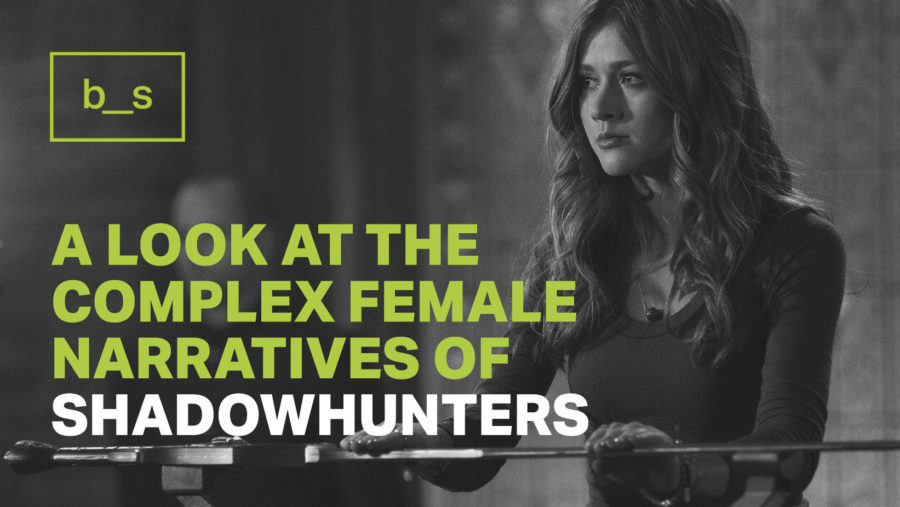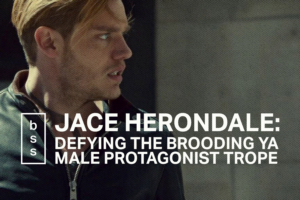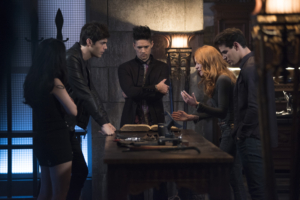A clear shift in the storytelling of Shadowhunters has become apparent throughout the course of the series as the entertainment industry continues to go through major upheaval. This shift comes from female characters actively taking back their own narratives when other characters have tried to take charge. Sometimes these moments of change are instantly identifiable while others take time to become apparent. Sometimes it’s just about them owning their space, their bodies, and their voices in moments when the show could have taken things in another direction. It is also about how these women are not meant to be just “one thing.” They are allowed and even encouraged to be complex and intricately layered individuals. Here, we examine how the female characters of Shadowhunters have flipped the script and defied expectations.
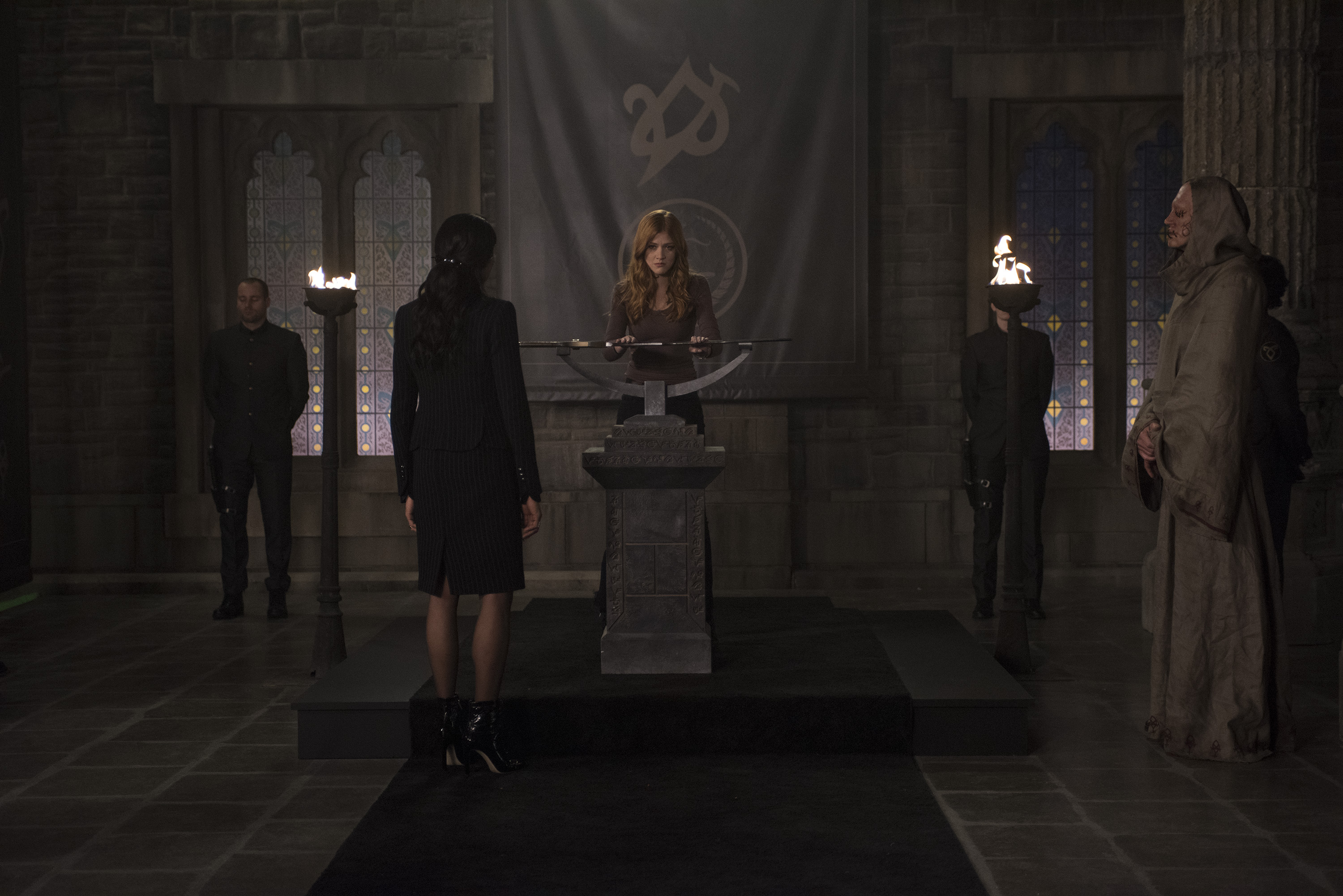
Clary stands trial in front of the Clave (John Medland/Freeform)
Beginning with the most central female character of the show, Clary Fairchild has gone through hell and back. Again and again, she has continued to step up and save the day. This could just be because bad things seem to follow her around. This could also be because Clary has her own set of rules she uses to solve problems and kill the Big Bads. For example, after using the one wish from the Angel Raziel to bring Jace back to life at the end of Season 2, Clary was forced to deal with the terrible consequences of what she had done. Reviving Jace left him vulnerable to the Mother of All Demons, and Clary felt responsible to fix it. That self-blame could have crushed her. Instead, she let those feelings fuel her in Season 3. Although she felt guilty, she made it clear to the Clave that she did not regret her decision since it also saved the lives of countless Downworlders. She was glad to have rid the world of a weapon that was capable of causing such destruction. Clary went against the rules that were determined by the Clave and followed her own path. Clary has challenged the archaic ways of the Shadow World ever since she arrived and she has continued to do so more and more every season.
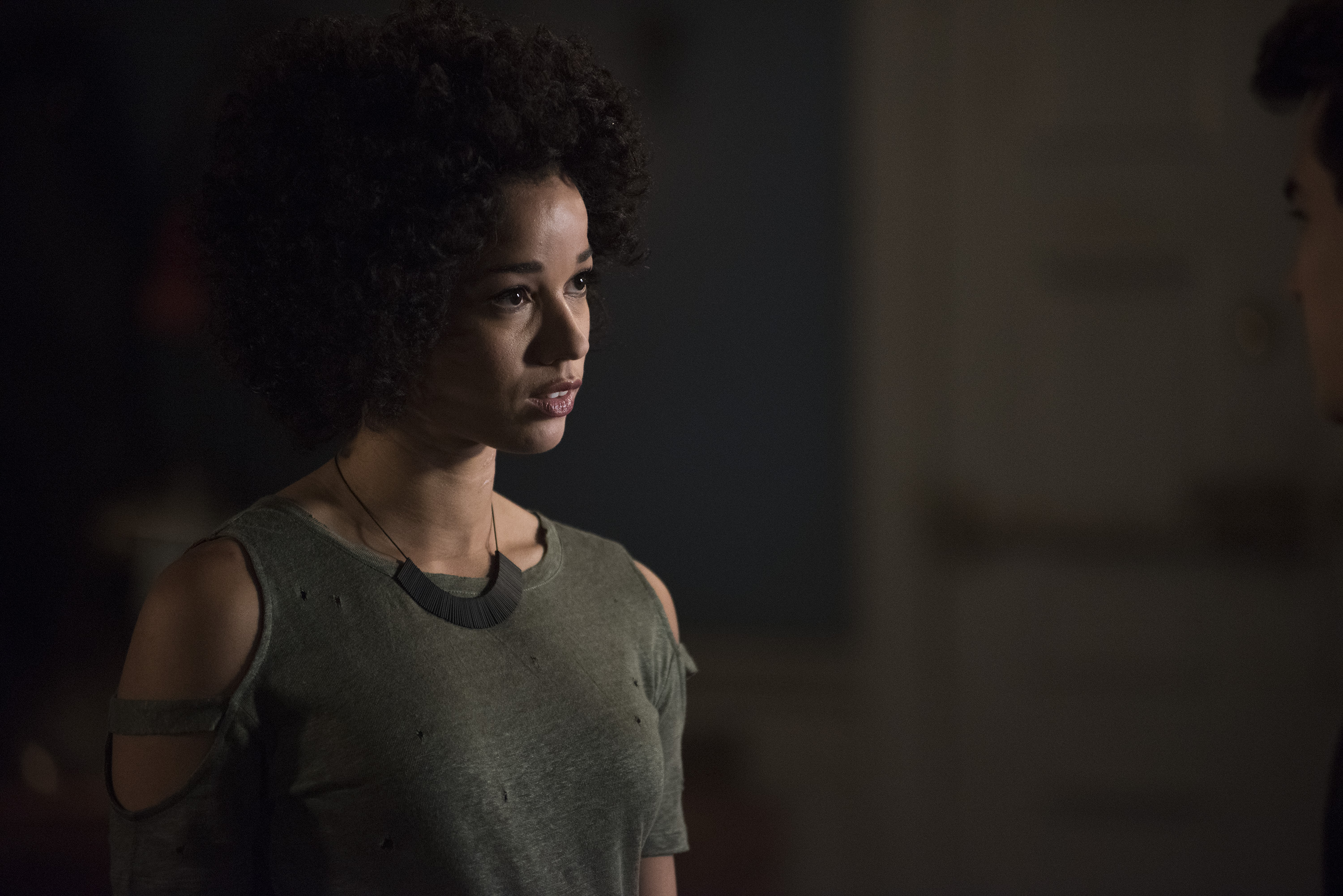
Maia lays down her law to Simon (John Medland/Freeform)
Much like Clary, Maia also stood up for herself and her decisions by being unapologetic about them. Maia shut down the problematic AF werewolf Russell at the beginning of Season 3 when he decided to make Maia’s romantic life his business. Clearly, Russell couldn’t get past the fact that Maia was dating a vampire, and his prejudices made him feel justified in speaking up against it. Nevertheless, Maia continued her relationship with Simon Lewis. During the most awkward double date ever in 3×02 “The Powers That Be,” Jace let it slip that he knew where Maia’s secret tattoo was. Simon initially assumed Maia was going to make excuses for having slept with Jace. However, Maia made it clear she knew she had nothing to feel guilty about or explain away. When her abusive ex-boyfriend, Jordan Kyle, came back into her life, Maia’s focus turned to her own safety (not just physically but also mentally) and whatever that might mean for her. Since her introduction early on in Season 2, Maia had always seemed very sure of herself, very strong and unbreakable for the most part. Her confidence rarely wavered in 3A. But, during the flashbacks with Jordan, we saw a different version of Maia. We saw her start to question herself and her path, as Jordan became more controlling and toxic. In Maia’s dealings with Jordan in the present day, her strength only multiplied when she demanded that he give her the space she needed. She demanded that Jordan not leave Simon behind in the way that he left her behind. Jordan tried to explain away his wrongdoings with his allegiance to the Praetor, but Maia didn’t take that as an excuse. By not granting him forgiveness, Maia forced Jordan to reconcile with his actions. Maia ended 3A doing something many women (fictional or not) struggle to do when manipulated by society. Maia put herself first. She put her own well-being first and left for Jersey, at least for now.
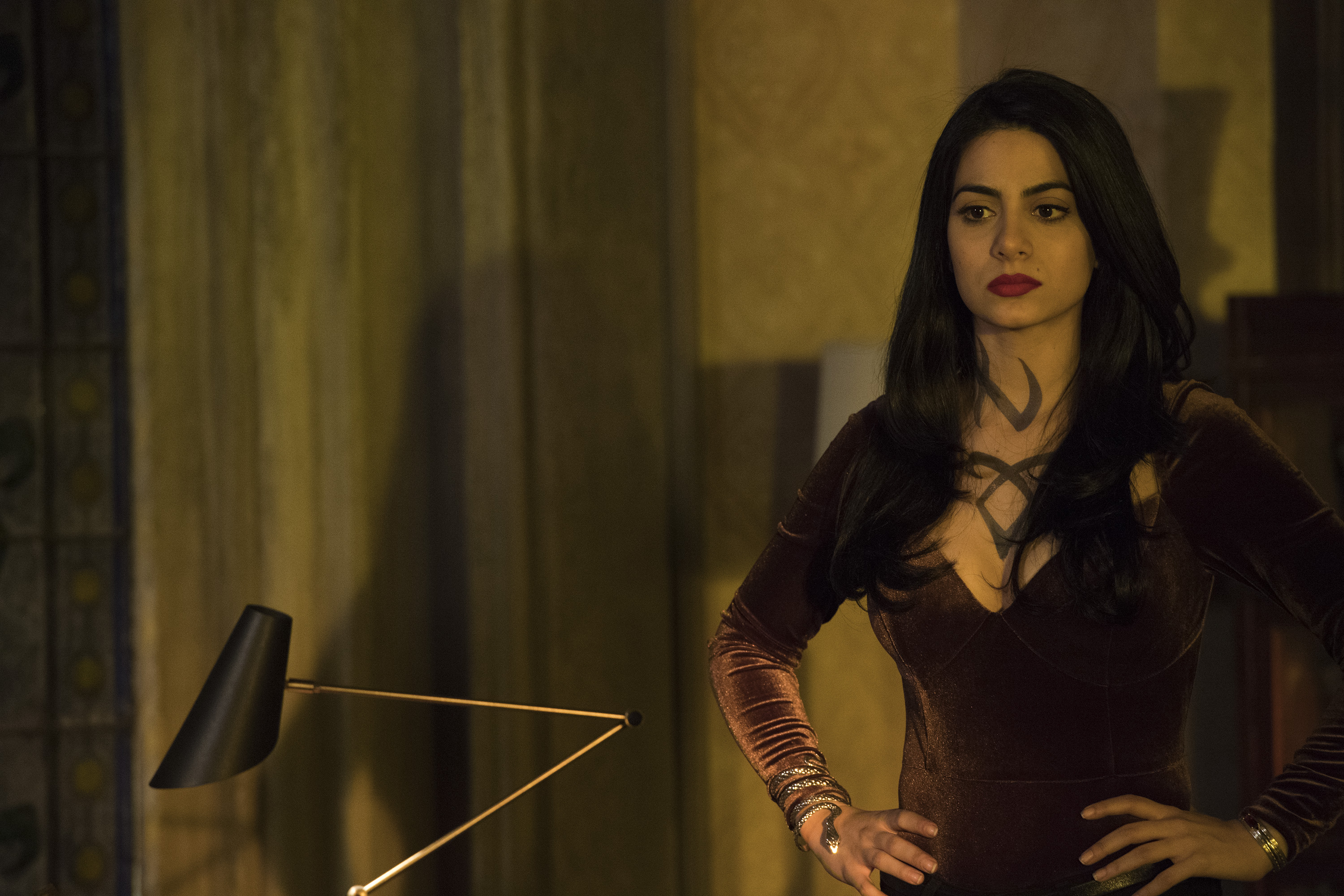
Isabelle at attention, as always (John Medland/Freeform)
Similar to Maia putting herself first, Isabelle Lightwood also used Season 3A for some much-needed self-care and focused on her sobriety – while also saving the world, of course! Isabelle was promoted to Weapons Master of the New York Institute and shared with her friends and family that she had been attending AA meetings. As a way to cope with the violence and havoc Sebastian Verlac – or rather Jonathan Morgenstern – brought into her life, one of the first things she did as Weapons Master was to repair her necklace which was damaged from her encounter with Azazel (and subsequently Jonathan) in 2B. She repurposed the necklace into a bracelet. The new bracelet can be seen as a symbol for Isabelle herself, recovering and returning with new purpose. Then there was the interesting dynamic she had with Doctor Charlie. Her relationship with him was more about the newfound appreciation and respect she gained for mundanes after their twelve-step program saved her life. Shadowhunters have a history of neglecting their human sides. Through those meetings, Isabelle was reminded about her human side. Beyond taking steps to put herself first, we saw Isabelle take initiative when she discovered that Raphael Santiago had been conducting inhumane experiments on Heidi. She could have easily turned him in to the Clave, adhering to the Accords, but she gave him the option to leave the city. While it can be debated whether Isabelle’s decision was the right one, it was her own. She protected someone she cared about, even though it went against what she was brought up to believe. Perhaps she felt that Raphael deserved a second chance like the one she was given.
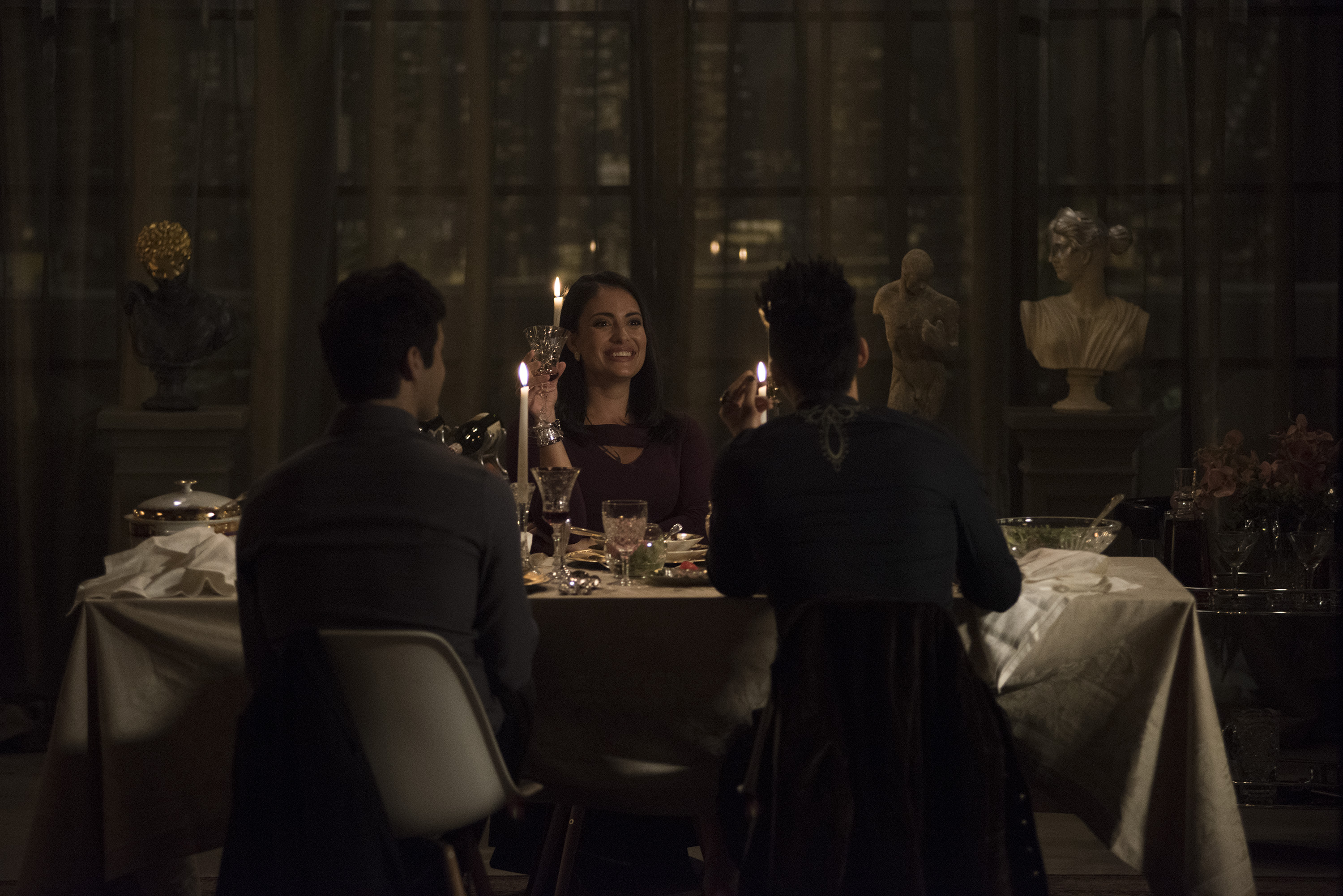
Maryse makes peace with her son and his boyfriend (John Medland/Freeform)
Maryse Lightwood also pushed back against what the Clave had taught her by completely transforming herself as a member of the Shadow World and beyond. She became a new woman, one who owns her mistakes and learns from them. She also worked hard to repair her relationships, seeking forgiveness and reconciliation from her children and Luke Garroway (someone else with whom she has a complicated past). As we learned in 3×03 “What Lies Beneath,” Maryse admitted to her part in Valentine’s grand scheme, and as a result, was stripped of her runes. She didn’t fight the system, even though she could have with the help of her family (especially her son Alec). In having to confront her status change, Maryse was able to readjust her priorities. That is when she began to realize that her love for her son and wish for his happiness was greater than the hate and bigotry her generation leaned into and attempted to spread. After an (uncharacteristically) delightful evening spent with her son and his significant other, Maryse told Magnus Bane, “I may have had my prejudices in the past, but seeing you stand by Alec, it’s what every mother wants for her children. Thank you for loving my boy.” Then she hugged him. Maryse Lightwood hugged Magnus Bane. This hug represented a great change in Maryse. It changed how the audience and other characters viewed her from that point on. It also showed how Maryse had changed the way she viewed Magnus and his relationship with her son, where previously she had not approved of her son dating a Downworlder. Finally, it showed a change in the way she viewed herself. It can be argued that she now sees herself as someone capable of empathy and compassion when she was brought up to believe that those feelings made her weak. Maryse could have been overlooked as the stuffy, prejudiced mother of the Lightwoods, but she proved herself to be so much more. Maryse is a mother, which makes her fiercely protective. She is a leader, but she’s also flawed. She demanded our attention as she came into her own and pulled away from the restrictive laws of the Clave. She forced viewers to reimagine her in a space that is accepting and loving and her own.
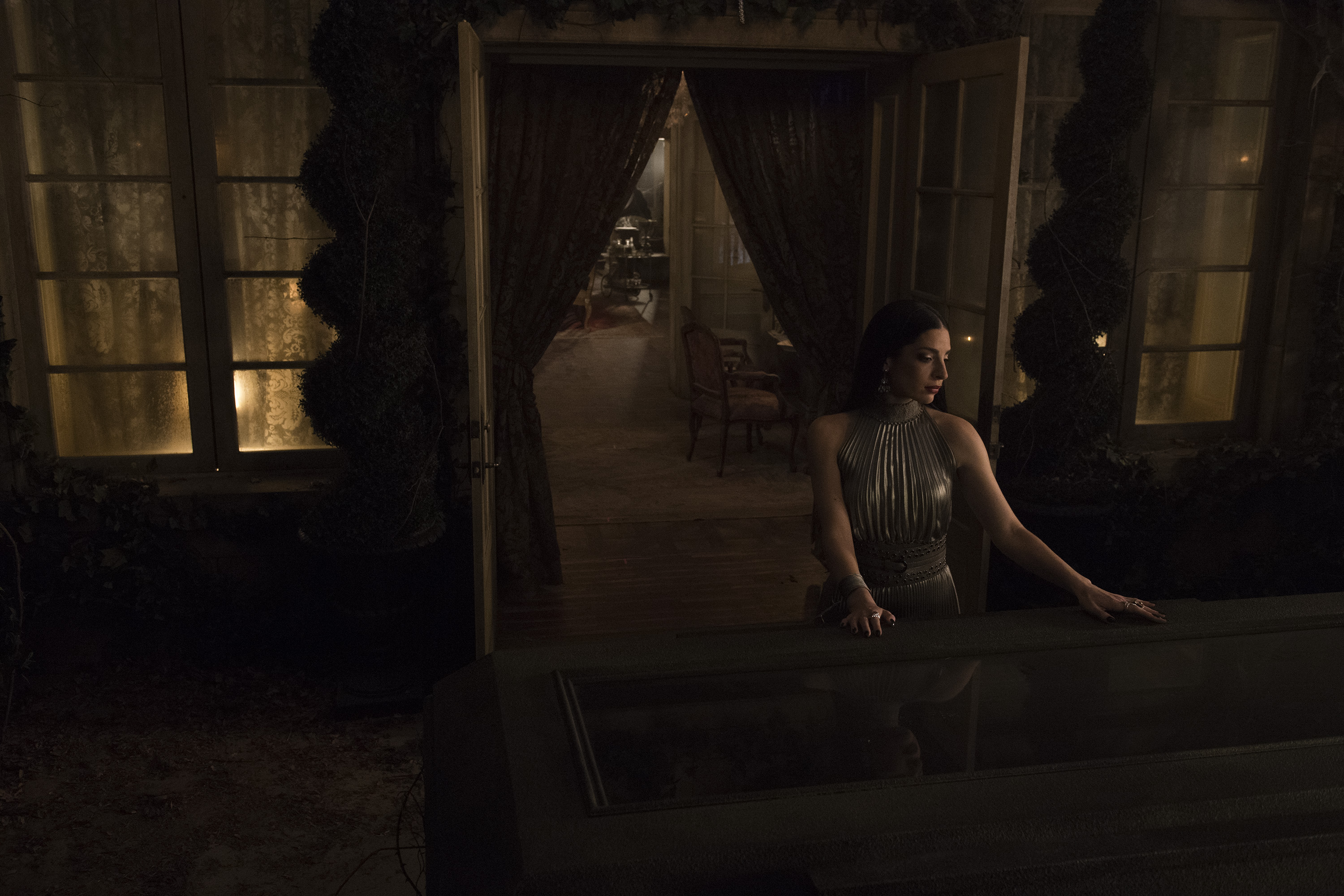
Lilith plots her revenge (John Medland/Freeform)
Finally, we couldn’t end this piece without taking the time to reflect on the Mother of All Demons and how she was an absolute force to be reckoned with in Season 3A. Every move she made, every word she said was out of love for her son. We don’t blink an eye if our favorite characters act out when their loved ones are hurt, threatened, or killed. She may be a villain, but she’s also a mother who lost a child. She was thrown out of paradise for not granting Adam an heir. The one thing she never thought she would get – a child, in Jonathan – was ripped from her for reasons completely out of her control. She was unable to help her son when he needed her most and she took it upon herself to avenge him. To her, that meant putting Jace through possession and the torture of his loved ones by his own hand. Villains tend to operate out of their need for revenge, which makes feeling empathy towards Lilith a little more complicated. We could never condone her actions, but we can at least understand her anger about the untimely death of her son.
There have been many opportunities when this show could have downplayed the layered stories of these women. Clary fought the system as she stood up for herself and her decisions. Isabelle found personal peace and new perspective outside the Shadow World. Maia was unapologetic in doing what was best for herself. Maryse molded herself into a woman who learned from her mistakes and took steps toward a better future. Lilith asked viewers to look beyond the villain and see a mother who had suffered tremendous loss. In a time when women’s stories are finally being told in different ways and from many angles, it is important that Shadowhunters continues to tell these types of stories.

